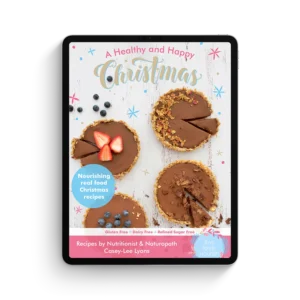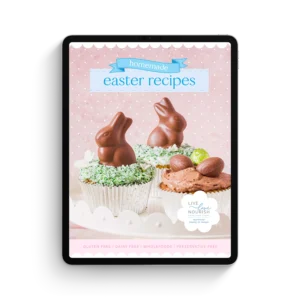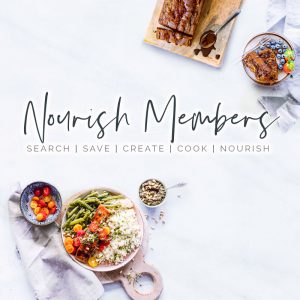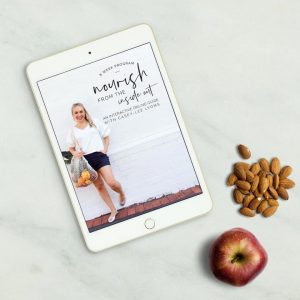Providing the right nutrition for your growing children whilst offering them foods that they will actually eat can be quite the challenge. As a mum myself I understand!
As a mum you can never have enough ideas when it comes to being creative and feeding your children, especially snacks! Ones that are quick and easy yet not filled with poor quality ingredients. I have recently discovered an Australian brand, Adventure Snacks (owned and run by a mum herself) that provides time-saving make-at-home snack mixes great for kid’s lunch boxes, free from all the nasties you often find in pre-packaged snacks. I loved reading Tracey’s (the owner) story on keeping up with her toddler “wanting a snack” and having something convenient yet healthy on hand. I’m sure as mums and dads we can all relate! So I thought I would put together some ways to approach packing a healthy lunchbox with some simple snack ideas below.
As a naturopath and nutritionist I am passionate about helping you to find ways to nourish your family and little one so they can enjoy a healthy and full life.
I hope these tips will help you to create a delicious and nourishing lunchbox that your little one/s will love.
Why Is Nutrition Important for Kids?
You little one’s body is growing and developing every day and requires key nutrients to thrive. Providing your children with balanced nutrition provides them with energy to concentrate, learn and play.
What we feed our children can have an affect not only on their health but their behaviour and ability to concentrate in the classroom and learn from the world around them. Kids are more distracted and find it hard to concentrate when they have a hungry tummy.
Children who are fed a healthy diet also tend to make healthier choices as they grow up.
We want to give them the best opportunity to be healthy and through nourishing their body with wholesome food we give them this gift.
Basic Lunchbox Nutrition
Your little one needs a balance of nutrients each day for growth and development. The key macronutrients our bodies need are protein, carbohydrates and good fats. Try to include some of each of these in your kid’s lunchbox.
They need protein for their growing bodies. This also keeps them fuller for longer and to maintain concentration levels. Protein can be from animal-based sources (such as organic chicken, grass fed meat, eggs and fish) or from plant-based sources (such as chickpeas, legumes, beans, lentils, tofu and quinoa).
They need good quality carbohydrates as their major source of energy. Focus on complex carbohydrates rather than refined “white” carbohydrates. Good choices might include quinoa, brown rice, brown rice cakes, sweet potato, buckwheat, buckwheat flour (in pikelets for example) and other starchy veggies as further examples. Avoid refined white flours, biscuits, cakes etc.
They need some good quality fats for their overall health, to keep them fuller for longer as well as providing them with slow release energy. They also help us to absorb fat soluble vitamins. Good quality fats include avocado, extra virgin olive oil, olives, oily fish, nuts (although not permitted in most schools) and seeds for example.
They also need fibre and micronutrients which we can provide from whole fruits and vegetables.

What To Include In Your Child’s Lunchbox
You want to offer your children the opportunity to thrive and to grow, learn and play at their best by fuelling their body with nutrient-rich whole foods. Avoid the “packet” lunch and instead learn to create real food lunch boxes that will nourish your little one.
A good place to start is to aim to include:
- Main lunch item (that incorporates vegetables in some way even if disguised) +
- Nutritious snack (from whole-food ingredients, unprocessed/ unpackaged and with no refined sugar) +
- Piece a whole fruit +
- Water.
Optional
- + an extra nutritious snack for active / fast growing children.
Watch out for added and hidden sugars. Think fresh, whole-foods as close to their natural state as possible.
Avoid sugary fruit juice. Choose whole fruit instead.

Lunchbox Ideas
Main Ideas:
- Fritters
- Fittata
- Homemade sushi with protein rich quinoa instead of rice
- Tuna and buckwheat pasta
- Egg muffins (savoury with finely grated vegetables and cooked quinoa)
- Dinner leftovers are great
- Rissoles with grated veggies
- Chicken mince “nuggets”
- Salmon and potato cakes
- Meal in a muffin (egg muffin / mince muffin / tuna cakes)
- Wholegrain “rainbow wrap” (I use a gluten free wrap without preservatives and fill it with avocado or hummus instead of butter and their favourite colourful salad vegetables and protein of choice). Slice it into smaller, less overwhelming pieces if needed.
- You’ll find lots more family friendly recipes and ideas in my recipe e-book.
Snacks
- Gluten free crackers. (Find good quality ones with wholegrain/seeds) Great to serve with avoacdo dip.
- Make-at-home refined sugar free muffins. (Adventure Snacks have a great organic and preservative free range).
- Fruit and Seed Bliss Balls (Adventure Snacks also provide a ready-to-roll mix that is also nut free).
- Pikelets sweetened with banana or apple puree instead of sugar.
- Roasted vegetable “chips”
- Raw vegetable sticks.
- Dips – most kids love to dip. Think guacamole (good fats) and hummus (plant based protein).
- Remember the simple things as well as as boiled eggs (fun to draw a face on the shell) or canned chickpeas.
- Mini chia pudding.

Above: Adventure Snacks Sweet Potato & Zucchini Muffins (Gluten free, dairy free, refined sugar free)
Incorporating Vegetables
- Finely grated veggies such as carrot or zucchini can hide in almost anything. Even into dips.
- Add frozen vegetables into smoothies for breakfast (cauliflower and zucchini work really well and wont affect the flavour).
- I add grated zucchini and carrot to muffins (sweet and savoury) and they go undisguised just like these Sweet Potato and Zucchini Muffins.
- Use vegetables as dippers for dips.
- Use vegetables as crackers. For example capsicum “boats” or cucumber slices.
- Add finely grated vegetables to homemade rissoles/ meat balls or chicken mince nuggets.
- Using vegetables to make strands of pasta or noodles (use a vegetable peeler or spiralizer).
Drinks
Get them use to drinking water. Water is all they need to keep hydrated. Fruit juice, soft drink, energy drinks, cordial etc contains too much sugar.
If your child doesn’t like drinking water, add some fresh berries to their water bottle and get them to fill their own favourite water bottle up each morning.
Tips
- Being organised will make the biggest difference to your morning rush to get the kids to kindy/ school. Prepare what you can the night before.
- Cook extra portions at dinner. This will save you a lot of time. Make sure you make extra for yourself as well as for your little one.
Other Things To Consider
- Remember that children’s appetites vary each day.
- Try to avoid food boredom and keep refreshing your ideas. Variety in their diet is beneficial.
- Try to make sure foods aren’t too fiddly or too sticky for example.
- Provide a variety of savoury and sweet options, not too many sweet flavours. The more they eat sweet things the more they will look for sweet options. We want to encourage savoury flavour which can help with increasing vegetable intake.
- Don’t forget calcium rich foods. Some unexpected ways to include calcium include tahini (sesame seed paste) in hummus, chia seeds (can make chia pudding), fish with edible bones (such as canned salmon), broccoli and nori seaweed sheets for sushi.
Fussy Eaters
I get it! My very own fussy eater has taught me lots of tips and tricks that I hope might help you too. Here’s a few simple tips that can make a difference:
- Make them a part of the food prep and packing their own lunchbox. Kids feel proud when they can make things for themselves and are more likely to eat it if they were involved in making it.
- Offer variety. Over time, like we do, kids can get lunchbox fatigue. Remember to change things up here and there.
- Keep it simple. Too many things in the lunchbox can be overwhelming. Focus on 1 simple main, a nutritious snack, a piece of whole fruit and water.
- Don’t give up. Keep offering healthy options. Eventually one day they just might try it.

Above: Adventure Snacks Strawberry and Banana Muffins topped with coconut frosting.
Get Them Involved
When children have a role to play in making their lunches they typically are more likely to eat their lunch as well as helping them to develop a positive relationship with healthy food.
You could get them to help prepare a few things the night before, choose their preferred piece of fruit, pack the lunchbox itself etc.
Let them choose their own lunchbox. If they love their lunchbox they will be much more excited to eat from it. Make sure it is one that has compartments, is easy to open and easy to keep cool.
You can also practice “lunchtime” with your child to build confidence (both in yourself and them) by taking them on a picnic with their packed lunchbox. This way you can see if they can easily open it etc as well as create a positive and fun association with lunchtime. You can also use this opportunity to encourage them to sit and eat their lunch before playtime.
I have a kitchen step for my little one to climb up on and help me prepare foods. She loves it. Embrace the mess if it means they are developing a positive relationship with food. It’s worth it.
Time Saving Healthy Snack Options
Looking after little ones sure can get busy! So I love having some ready-to-make snack mixes on hand in the pantry to reduce time and energy in the kitchen preparing wholesome snacks. Adventure Snacks offer an organic range of make-at-home snack mixes, perfect for healthy kids. They use all organic ingredients and are free from refined sugar and nuts. Find out more: www.adventuresnacks.com.au

I hope these tips help! Let me know in the comments below if you’d like some more tips, ideas and recipes for kids. I’d also love to hear of your healthy kids lunchbox ideas. Always great to learn from one another. Mums and Dads, we are in this together!
Casey-Lee x
Naturopath, nutritionist & mum




